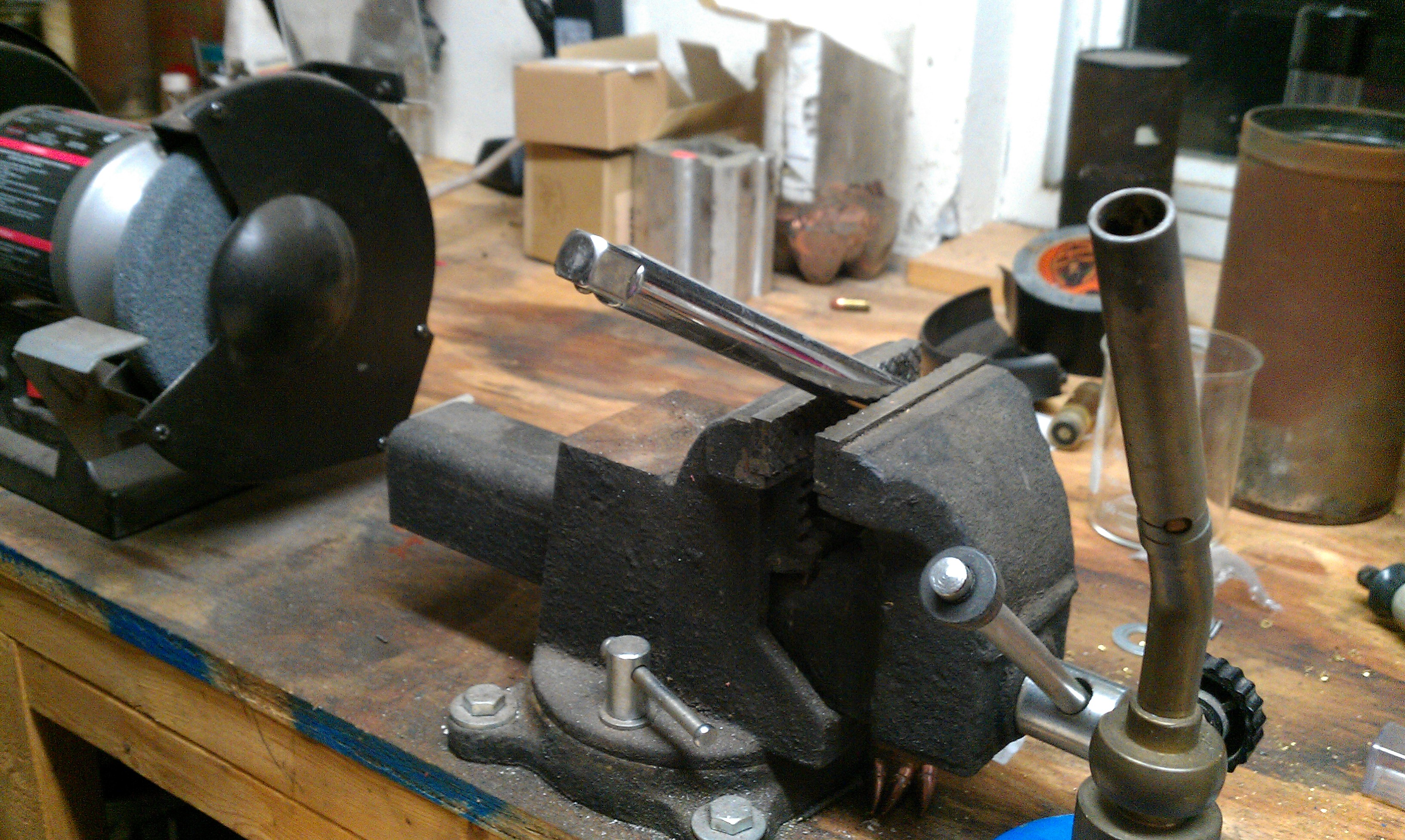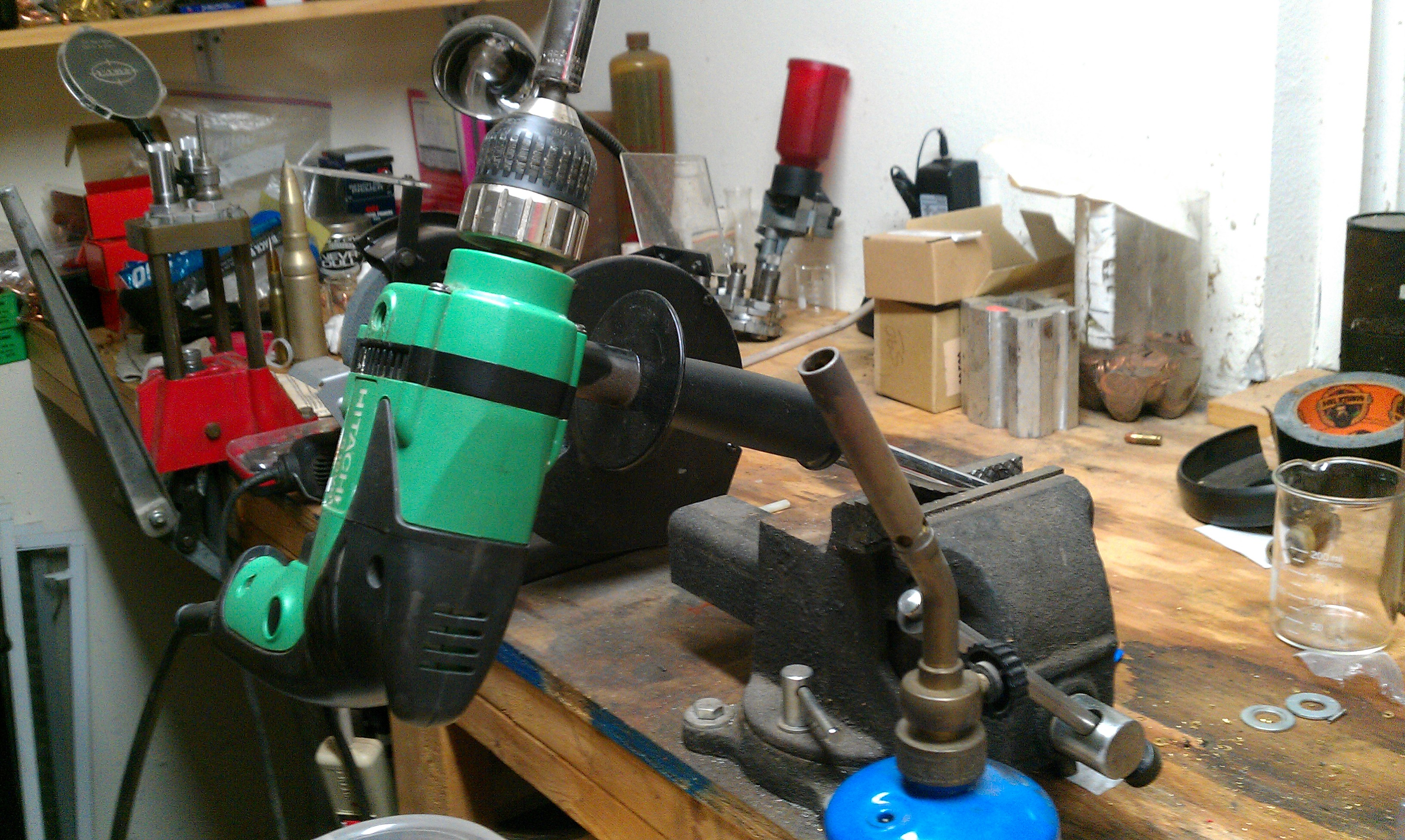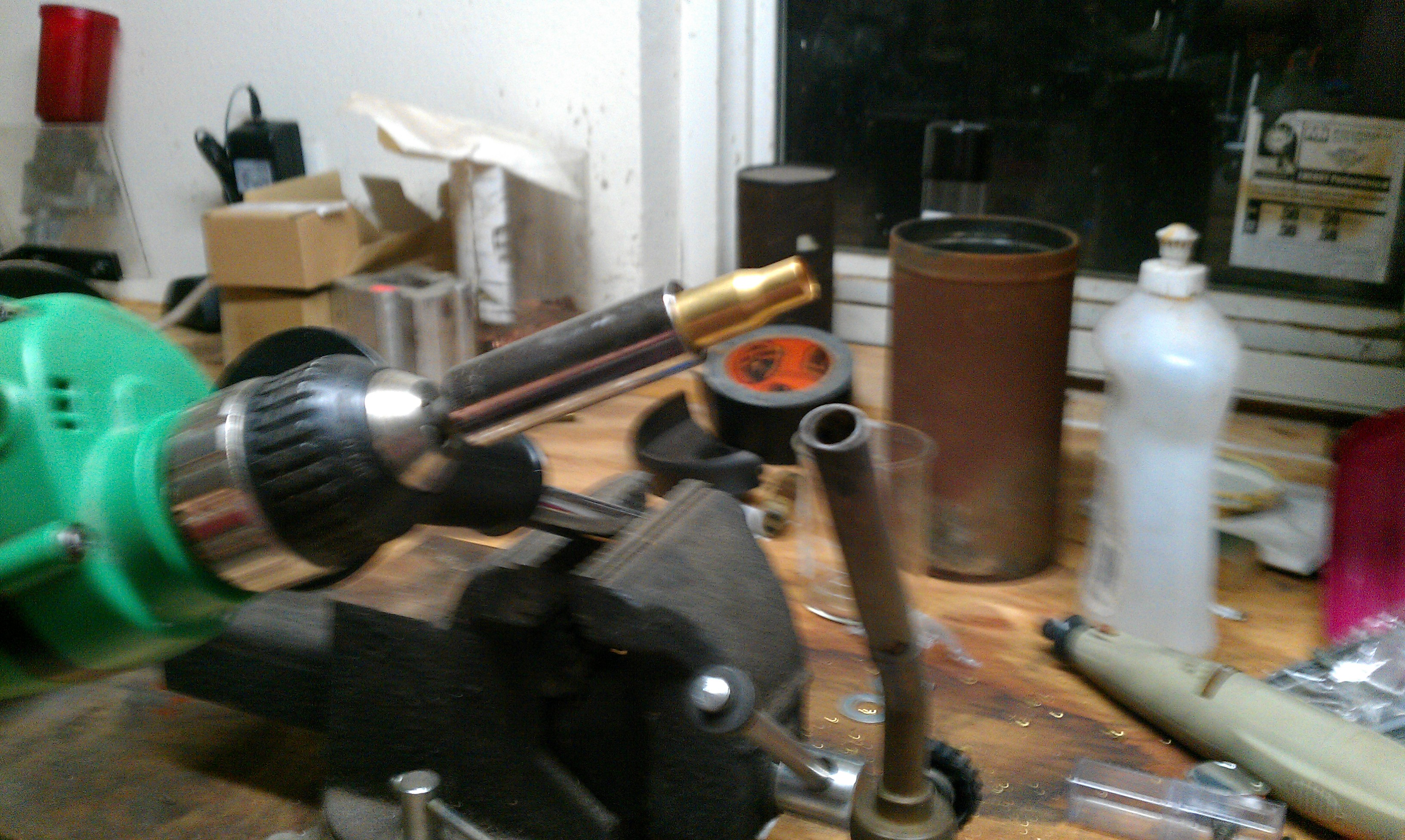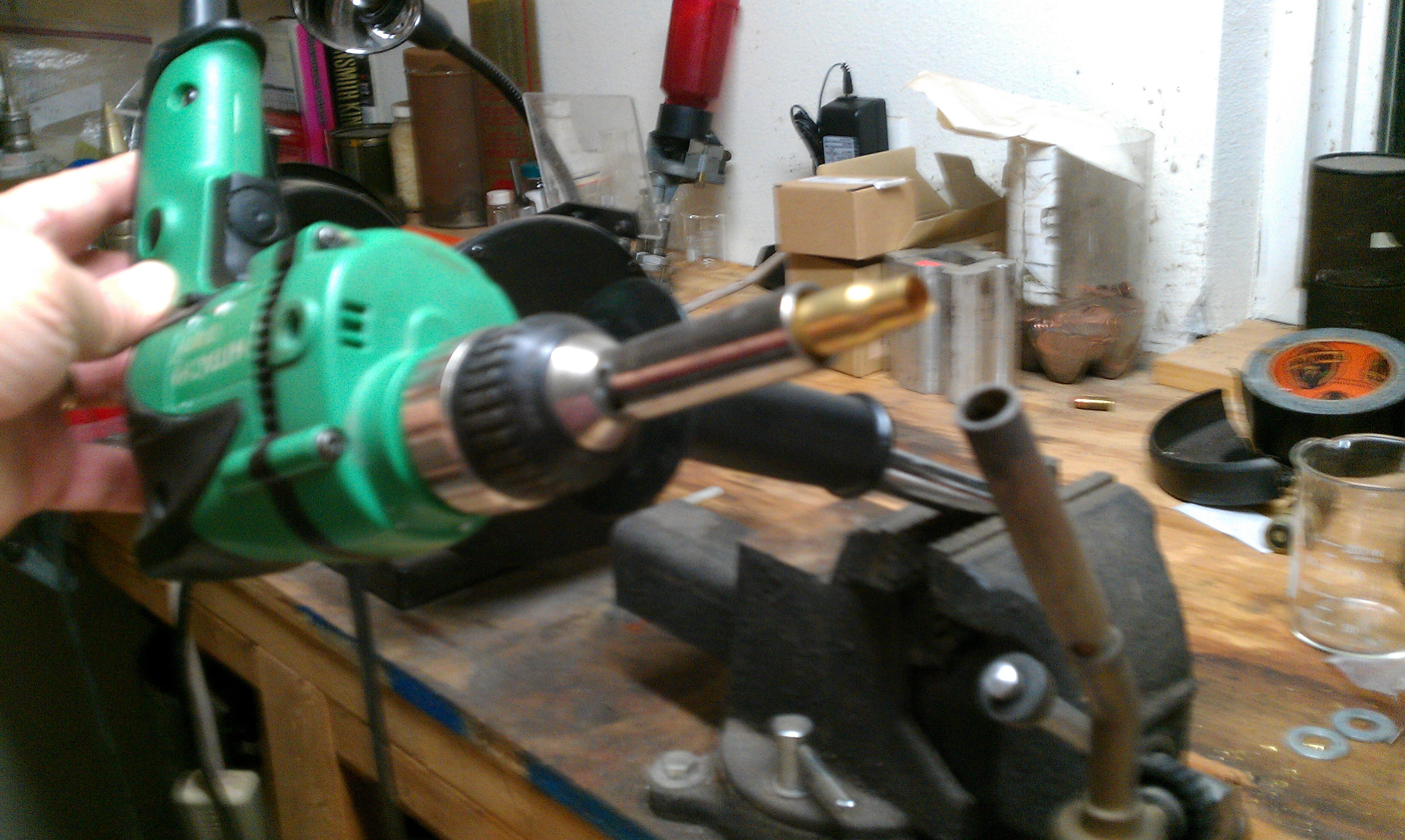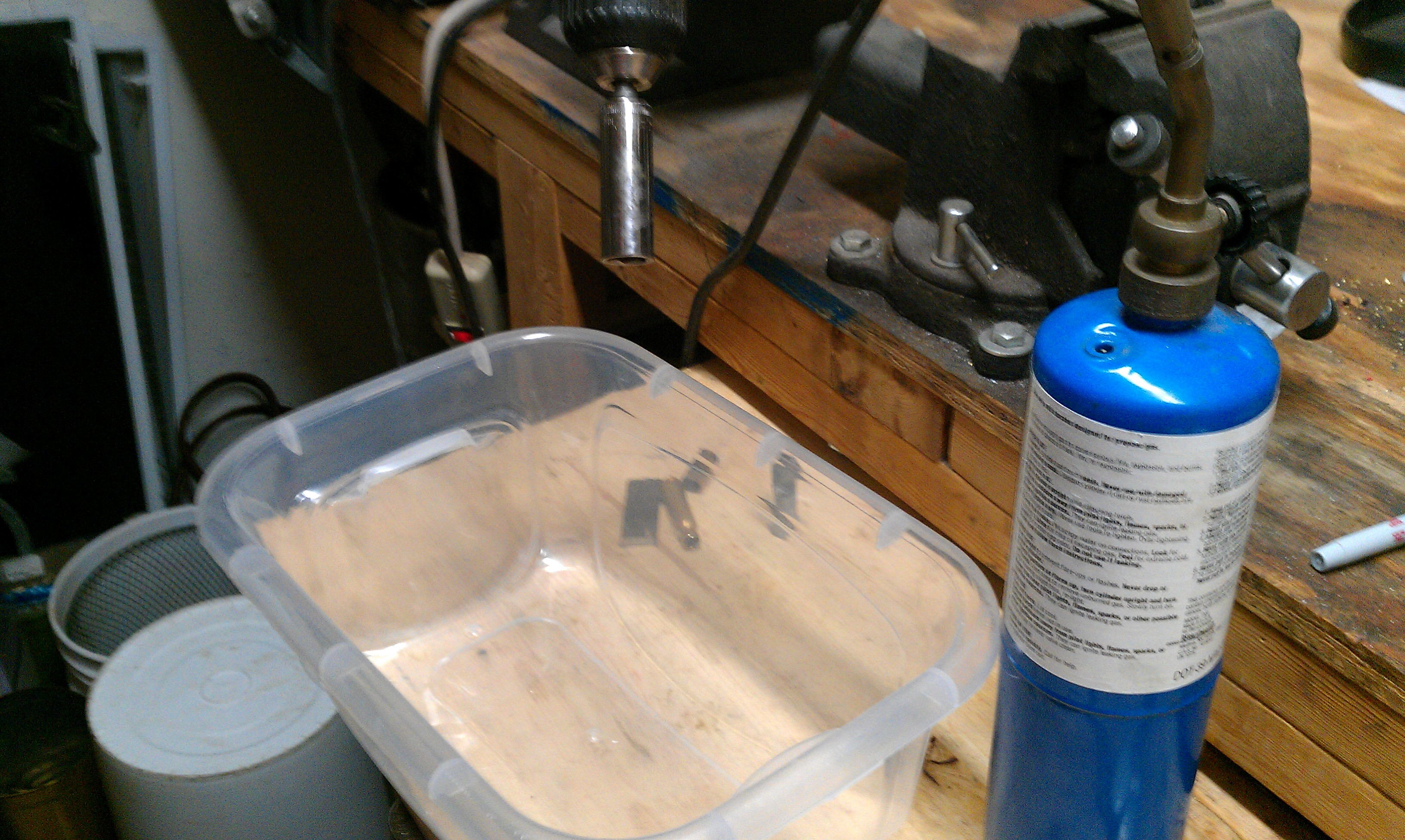about a week or so ago, I annealed my first set of brass and took the end product to the range with great results and I noticed that seating the bullets were A LOT easier than before. I did a bit of research on in the internet about annealing and the process was pretty straight forward, but I had some questions to ask.
1) when annealing, where do you guys point the flame? I aim the central part of the flame at the middle of the neck while turning the brass using a drill.
2) Are you looking for the NECK to turn blue or the SHOULDER to turn blue? I ask because when the shoulder turns blue, my neck begins to turn red but this is the instant where I pull the case out of the flame. I inspect the neck and it shows a blue hue as well, but there are some online sources that state the neck should never turn red. I've found it impossible so far o heat the neck and shoulder blue at the same time unless you're suppose to just heat the brass until just the shoulder turns blue. Using the method I just stated, I am assuming I didn't overheat the brass even though the necks turned red because the shoulders didn't collapse upon full length resizing.
1) when annealing, where do you guys point the flame? I aim the central part of the flame at the middle of the neck while turning the brass using a drill.
2) Are you looking for the NECK to turn blue or the SHOULDER to turn blue? I ask because when the shoulder turns blue, my neck begins to turn red but this is the instant where I pull the case out of the flame. I inspect the neck and it shows a blue hue as well, but there are some online sources that state the neck should never turn red. I've found it impossible so far o heat the neck and shoulder blue at the same time unless you're suppose to just heat the brass until just the shoulder turns blue. Using the method I just stated, I am assuming I didn't overheat the brass even though the necks turned red because the shoulders didn't collapse upon full length resizing.

